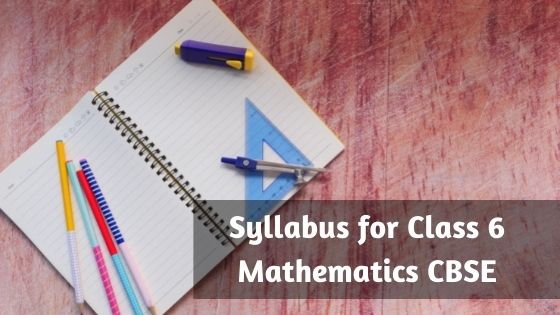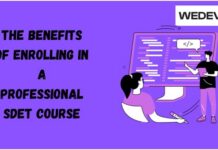When asked about the scariest subjects in the entire curriculum, the name of Mathematics is generally on the top. But ironically, it is seen that students who have their basics clear in this subject find its problems quite easy and easily get all the answers and score well.
The scary part of Maths is overpowered by its benefits. Many students may wish to kick this subject out of the curriculum, but the benefits it provides are so crucial that it makes Mathematics one of the most important subjects which are even needed in our day-to-day lives.


It is the only subject that promotes logical reasoning along with creative thinking. Yeah, Maths can be creative too because one problem can be solved in numerous ways so everything depends upon your creativity!
Maths have plenty of advantages and some of them are listed below:
- Improves thinking ability and the power of concentration.
- Help to Build a logical and practical approach to problems not only related to text but also related to real-life situations.
- Helps to make a child smarter by sharpening the brain skills.
- Many inventions are based upon Mathematical concepts of counting and measuring.
- It acts as the basis of accounting and aid in keeping track of varied financial situations.
So undoubtedly, Mathematics is a very important subject for people of all age groups. Talking about the academic front, it is important for both junior and senior classes. It is even more important for the classes lying in the middle, the ones which can’t be called as a junior class nor they can be accepted as a senior one. Class 6 is one of those medieval classes. Maths shall be taught even more nicely to these classes because, at this stage, their basics advance quickly to cope up with the senior class syllabus in the coming years.
None other books than the NCERT class 6 Maths book are required to assist the students to get familiarized with the mathematical concepts and techniques.
Before beginning with the basics, it is important to be aware of the curriculum so here it goes:
Fourteen chapters come under this book, namely:
Chapter 2: Knowing Our Numbers:
This chapter includes a description of comparing numbers along with the usage of brackets. It allows the practice of larger numbers and even includes the topic of Roman numerals.
Chapter 2: Whole Numbers:
This chapter includes the concept of whole numbers by starting with its presentation on the number line. It even describes the various properties of whole numbers and includes the concept of patterns formed in whole numbers.
Chapter 3: Playing With Numbers:
This chapter includes the concepts of factors and multiples and even prime and composite numbers. It even provides tests for divisibility of numbers which is followed by the concepts of Highest Common Factor (HCF), and Least Common Multiple (LCM).
Chapter 4: Basic Geometrical Ideas:
This chapter includes basic geometrical concepts like points, a line segment, a line, a ray, curves, polygons, intersecting lines, parallel lines, angles, quadrilaterals, triangles, and circles.
Chapter 5: Understanding Elementary Shapes:
This chapter includes the advanced version of the concepts covered in the previous chapter. It provides an introduction to the types of angles, measuring angles, measuring line segments, and the concept of perpendicular lines. It even includes the classification of triangles, along with the topics like three-dimensional shapes, polygons, and quadrilaterals.
Chapter 6: Integers:
This chapter provides an introduction to the concept of Integers. It includes addition as well as subtraction of integers using a number line.
Chapter 7: Fractions:
This chapter provides a detailed description of fractions and their representation on the number line. It includes the types of fractions namely Proper, Improper, Equivalent, and Mixed fractions. It even includes Like and Comparing fractions and deals with the addition and subtraction of fractions in general.
Chapter 8: Decimals:
This chapter deals with the meaning of decimals and describes how to use and compare decimals. It even deals with the addition and subtraction of decimals.
Chapter 9: Data Handling:
This chapter introduces the concept of data handling. It covers topics like the recording of data, its organization, pictograph- its interpretation and drawing, along with the concept of a bar graph.
Chapter 10: Mensuration:
An introduction to the topic of menstruation is provided in the chapter along with the concepts of perimeter and area.
Chapter 11: Algebra:
It is a vast subject that includes many topics. It begins with the introduction of the term followed by certain matchstick patterns to describe the meaning of variables. This chapter then deals with a detailed explanation about variables including their examples, common rules, and variable expressions. This chapter further delves into the concepts of an equation and its solution.
Chapter 12: Ratio and Proportion
As the name suggests, this chapter deals with the concepts of ratios as well as proportions.
Chapter 13: Symmetry:
The second last chapter of the NCERT class 6 Maths book deals with the concepts of symmetry. It provides an introduction to symmetrical figures and depicts how to make them using ink-blot devils. This chapter also deals with figures with two lines of symmetry and even figures with multiple lines of symmetry. Lastly, it covers the concept of Reflection and Symmetry.
Chapter 14: Practical Geometry
Practical Geometry serves as the last chapter of the CBSE class 6 NCERT curriculum for Maths. This chapter deals with the practical aspect of geometry. It includes the concepts of a circle, a line segment, angles as well as perpendiculars.
With this, the syllabus of Mathematics for class 6 based upon NCERT comes to an end. Students of class 6 are advised to prepare for the subject in a calm manner, without any panic. Students need to know that no other reference book other than the NCERT textbook is required to get assistance in preparation as this CBSE prescribed book covers all the basics and serves as the basis of all subject examinations for CBSE affiliated schools.
Wishing you the best of luck with your preparation in hope that this article helps you ace the same!























